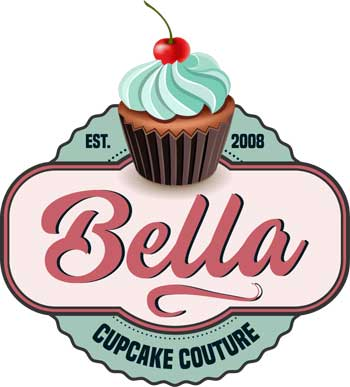
Want an easier transfer of your muffins and cupcakes from the mold to your plates? Well, you should find yourself a non-stick bakeware set so you can have an easier baking experience! Beginner or professional, any baker can enjoy and benefit from the use of non-stick bakeware. You do not have to worry about schmutz and grease stains ever again. In this article, you will learn what non-stick bakeware is, what it is made of, the advantages and disadvantages of it, and of course, how to clean non stick bakeware!
Are Non-Stick Bakeware Safe?
Non-stick bakeware, such as your cookie sheets, baking pans, and molds, are coated with polytetrafluoroethylene (PTFE) or Teflon. It is a synthetic chemical that is composed of carbon and fluorine atoms and provides you a non-reactive, non-stick, and frictionless surface to your bakeware.
Before we answer your question: “How to clean non stick bakeware?” let us answer first if they are safe for use? Of course, these non-stick bakeware are safe to use! There are only things you have to keep in mind to make sure there is no danger of toxins in your pies, muffins, and even cakes! Here are some of the ways you can prevent any risk from your non-stick bakeware:
- Do not preheat them when empty. Always make sure there is food in it when heating.
- Do not cook at high temperatures. The limit is 500 degrees Fahrenheit. Beyond that can pose a risk of chemical release from the Teflon.
- Ventilate your kitchen. Open windows to remove fumes.
- Always handwash your non-stick bakeware.
- Do not use old and deteriorated non-stick bakeware. If you see that the coating is already thin and peeling off, dispose of it properly.
Advantages Of Using Non-Stick Bakeware
So why should you use non-stick bakeware? Well, here are the advantages of using them:
- You only need a small amount of oil or butter in cooking or baking goodies, like cookies and cupcakes.
- They are easy to clean, wash, and dry!
- They uniformly distribute heat to your food.
- They look stylish. What baker does not want one?
- They are scratch-resistant (well, sort of). Just use the right utensils!
Disadvantages Of Using Non-Stick Bakeware
Here are some of the disadvantages of non-stick bakeware:
- You can easily damage if you use the wrong utensils, like metal ones and metal scouring pads.
- You cannot use them for high-temperature cooking or baking. Never beyond 500 degrees Fahrenheit!
- It releases fumes which you or your pets might be sensitive to.
- You cannot use it if you want to caramelize food.
- You cannot use it in the dishwasher.
How to Clean Your Non-Stick Bakeware
So how to clean non stick bakeware? Here are my hacks and tips:
- Fresh from cooking or baking, let your non-stick pans or molds cool first.
- With a dish brush, gently get rid of the schmutz from your cookware.
- Use hot, soapy water in washing your non-stick bakeware.
- Use a Dobie sponge or the blue Scotch-Brite sponge. Do not use the green and yellow Scotch-Brite sponge.
- Rinse it in warm water.
- Dry with a paper towel.
Just a tip, if you are cleaning or washing stacks of non-stick pans, always put a paper towel or clean dishcloth between the pans to avoid their bottom parts from scratching the non-stick coating of your bakeware.
Also, if there are grease burns on your non-stick coating, put in hot soapy water on your pan, heat it low on the stove for a few minutes to loosen the grease build-up. Use the same steps above how to clean non stick bakeware.
Things You Should Not Do!
Non-stick cookware and bakeware are delicate things! Not to mention expensive! So you better take good care of them. Most non-stick bakeware can last for three to five years if taken care of properly. Here are the big No’s if you have non-stick bakeware:
- Never use metal utensils with your non-stick cookware or bakeware. Metal utensils can scratch and damage your non-stick coating. Use wood, silicone, or non-stick utensils when cooking in your non-stick pan or skillet.
- Never use non-stick spray! I know, the irony of it, but non-stick sprays leave a film on your non-stick cookware that is impossible to scrub off. It also makes your bakeware less slick. Word of advice uses butter.
- Never over-heat it. As mentioned, non-stick pans can withstand a maximum of 500 degrees Fahrenheit. Just use it only for low-heat cooking, like eggs, pancakes, fish, or crepes!
- Never wash it in cold water while still hot! As mentioned, always let your non-stick bakeware cool first. Putting it under cold water can warp your non-stick coating.
- Never wash it using the dishwasher! As mentioned, the heat, the chemicals, and the utensils inside might damage the non-stick cookware or bakeware.
- Never scratch it! Scratches can remove the coating and can be detrimental to your non-stick bakeware.
Conclusion
So now you know how to clean non stick bakeware. Not only that, but you have also learned the advantages and disadvantages of non-stick bakeware. Always remember the things that you should not do. Those are very important because they pose a risk, not only to the bakeware itself but also to your health if you do any of those things. Purchasing non-stick bakeware is a great investment for a baker because they are great additions to your kitchen utensils. These things will allow you to achieve your dream of becoming a great baker. Know more about bakewares.
